From 1978 to 1995, James "Whitey" Bulger reigned as boss of the Winter Hill Gang in Somerville, Massachusetts — while secretly working with the FBI.
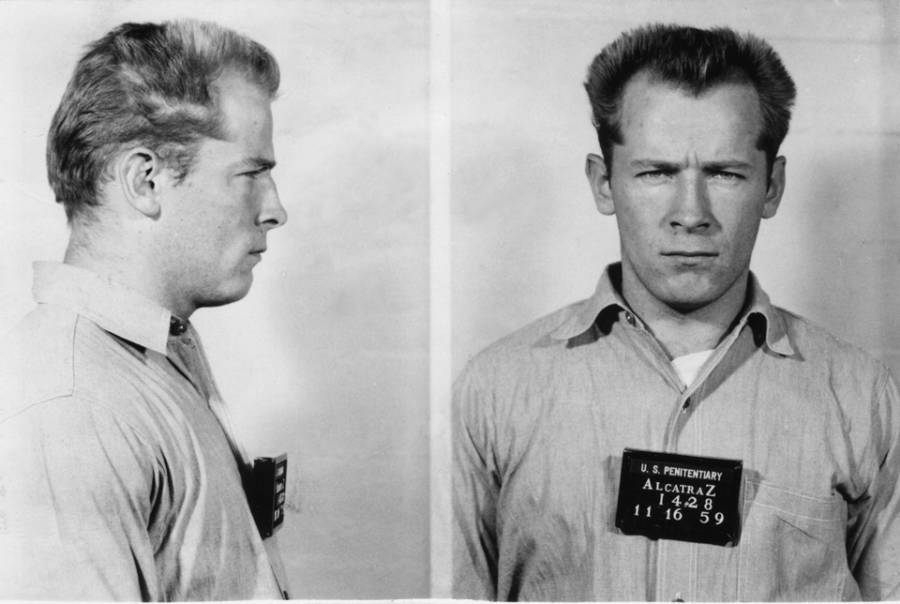
Wikimedia CommonsThe mugshot of James “Whitey” Bulger on the day he was sent to Alcatraz, November 15, 1959. After spending much of his youth behind bars, Whitey Bulger controlled Boston’s Winter Hill Gang for nearly two decades starting in the 1970s.
If you asked longtime Boston crime boss James “Whitey” Bulger, he’d tell you everything we’ve heard about him is wrong. As far as he’s concerned, popular movies inspired by his life — like Black Mass and The Departed — are completely inaccurate. For one thing, the man best known for leading a double life as both the leader of the Winter Hill Gang and an FBI informant insists he never snitched.
“I never cracked,” Whitey Bulger said. “Never, never.” It’s not that Bulger denied talking to the FBI. He just said that they were the ones helping him: “I was the guy who did the directing. They didn’t direct me.”
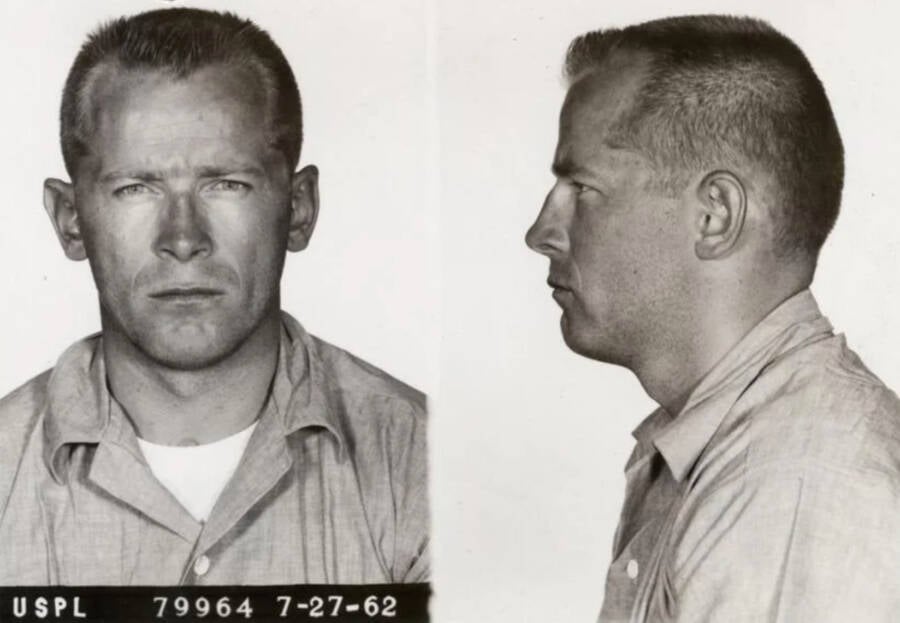
Public DomainA 1962 mugshot of James “Whitey” Bulger, the leader of Boston’s Winter Hill Gang until the mid-1990s, when he went on the run to flee the law.
It’s hard to say whether Whitey Bulger was telling the truth about any aspects of his life and crimes. To understand the complex, violent, and fascinating story of the criminal who got the nickname “Whitey” for his fair hair, and who ultimately died brutally in prison in 2018 after evading the law for more than 16 years, we have to start at the beginning.
From his decades’ worth of his crimes to his time on the run from the law to his brutal murder in prison in 2018, this is the turbulent story of James “Whitey” Bulger.
Whitey Bulger’s Rough Childhood On The Streets Of South Boston
James Joseph Bulger Jr. was born in 1929 in a housing project in South Boston. The second of six children, Bulger quickly turned to a life of crime, receiving his first arrest at the age of 13 for juvenile delinquency.
It was then that Whitey Bulger first encountered John Connolly. Just another project kid at the time, Connolly would go on to have a very significant impact on Bulger’s life.
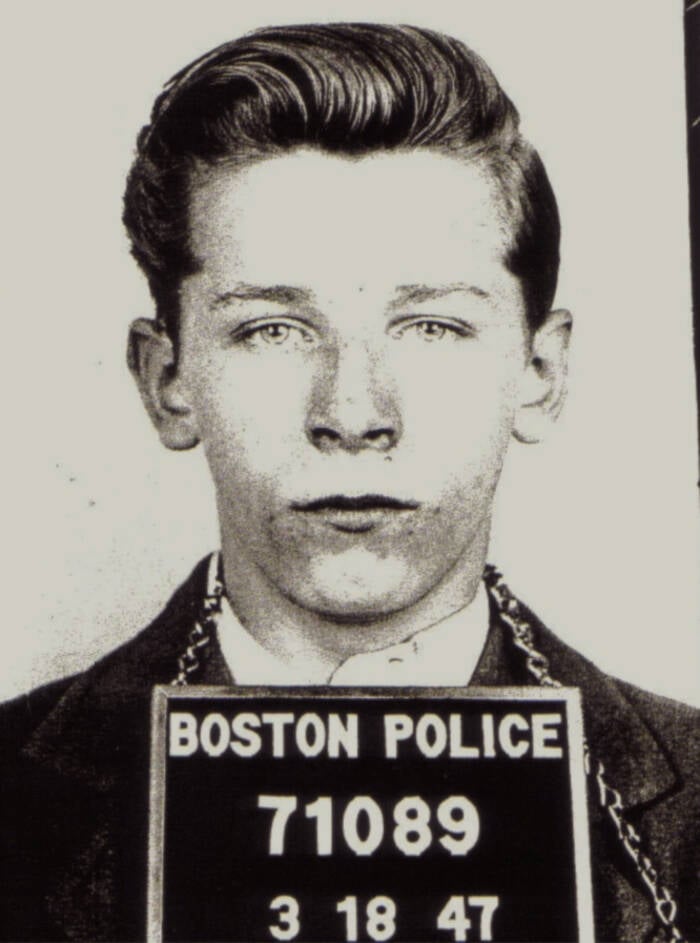
Boston Police DepartmentA 1947 mugshot of Whitey Bulger, taken before he had even turned 18 years old.
As Connolly later recalled, his first memory of Whitey Bulger was of having the young local thug buy him a vanilla ice cream cone. Later on, Bulger also saved Connolly from a bully’s attack. Then his brother Billy Bulger became a mentor to Connolly, encouraging him to study hard to get into college.
Despite developing strong ties, fate took John Connolly and Whitey Bulger in very different directions. Whereas John Connolly moved towards a career in the FBI, Whitey Bulger continued his life of crime, getting arrested for an armed bank robbery at the age of 26.
Bulger would go on to serve nine years in prison, three of them at the infamous Alcatraz. It was during his time in prison that Whitey Bulger volunteered to be a test subject for a scientific experiment.
Bulger Becomes Part Of The MKUltra Experiments While Behind Bars
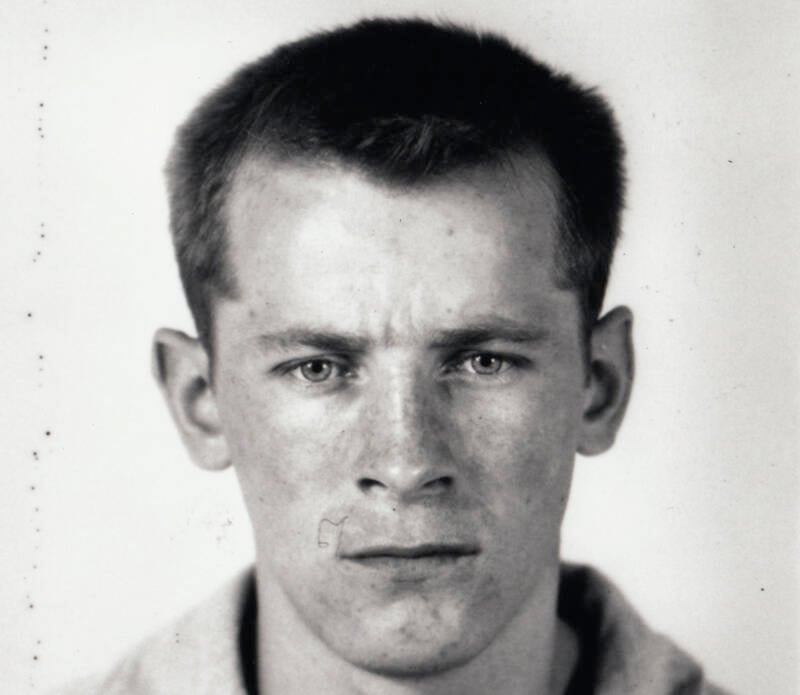
FBIA 1956 FBI mugshot of Whitey Bulger, several years before he was transferred to Alcatraz.
In exchange for being injected with LSD — then, a poorly-understood psychoactive drug — he would be able to reduce his prison sentence. The terrifying experiment left a permanent mark on Bulger, who suffered from insomnia and nightmares for the rest of his life.
Although Bulger believed the experiment was an attempt to cure schizophrenia, he later discovered that they he had actually been part of the infamous CIA project known as MKUltra. This secret project was carried out from 1953 to 1967 at universities, prisons, and other institutions, with the ultimate goal of creating a mind-control weapon.
According to crime author T.J. English, Whitey Bulger was allegedly “enraged to learn how the covert program had destroyed so many lives.” In fact, his longtime criminal associate Kevin Weeks claimed that Bulger even took steps to track down and assassinate Dr. Carl Pfeiffer, the man who oversaw the MKUltra program.
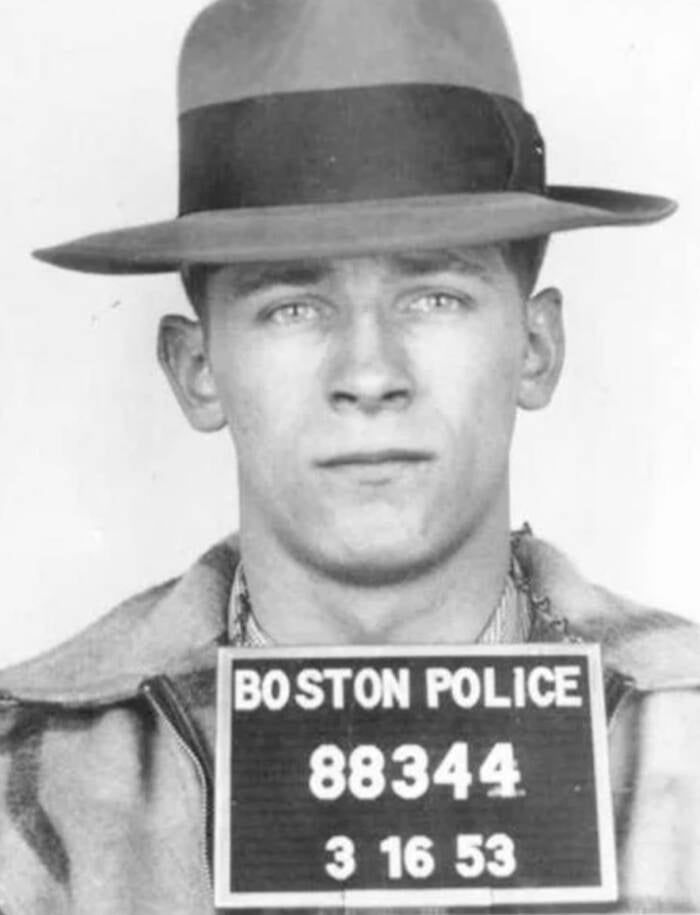
Boston Police DepartmentA booking photo of James “Whitey” Bulger taken by Boston police in 1953.
The Brutal War Between The Killeen And Mullen Gangs
Whitey Bulger’s stint at Alcatraz did much to boost his reputation among the criminal underworld in Boston. Indeed, in a town overrun by mobsters, it was sort of like a badge of honor. Not long after his release, Bulger found himself a place as an enforcer for the Killeen Gang.
However, in 1971, his group got caught up in a violent spat with another Boston gang, the Mullens. It was during this time that Bulger came to be known as a cold-blooded killer.
In particular, his reputation was cemented when he murdered Donald McGonagle, the brother of one of the leaders of the Mullen gang. What makes this murder significant is not just that McGonagle was innocent of the crime dealings of his brother, Paulie. It’s also the cold way the murder was done: Bulger simply drove up next to McGonagle, shouted his name, and shot him.
But for his all his ruthlessness, James “Whitey” Bulger remained a practical man. When his gang leader Donald Killeen was killed in 1972 and it became clear he was on the losing side, he met with Howie Winter of the Winter Hill Gang and mediated an end to the feud.
Whitey Bulger Takes Over The Winter Hill Gang

Wikimedia CommonsAn FBI surveillance photograph of Whitey Bulger and his lieutenant Stephen Flemmi.
Shortly after, Whitey Bulger went to work for Winter, forming a close partnership with Stephen Flemmi, another Winter Hill mobster quickly rising through the ranks.
The two men would go on to orchestrate numerous murders in the late 1970s and early 1980s. The most famous of these would be Roger Wheeler, a wealthy and prominent American businessman who found out they were skimming his money.
By 1979, with his boss Howie Winter going to jail for fixing horse races, James “Whitey” Bulger became the new boss of the Winter Hill Gang.
It didn’t take long to see that Bulger was an incredibly successful mob leader. Before he came around, Boston was largely ruled by the Italian mafia. But once Bulger took control, the rival gangs started disappearing one by one until the Winter Hill Gang owned the whole city.
For the next decade, Whitey Bulger and his gang controlled much of criminal activity in Boston, including drug trafficking, loansharking, extortion, and murder. What nobody knew, however, was that Bulger wasn’t working alone. There was a reason he’d been allowed to roam free.
Bulger’s Alliance With Childhood Friend-Turned-FBI Agent John Connolly
While Whitey Bulger was moving up the ranks of the mob world, his childhood friend John Connolly was doing the same in the FBI. With Bulger involved in the kind of crimes Connolly was working to stop, a confrontation between them seemed increasingly possible. When their paths finally crossed, however, the result was quite unexpected.
As it turns out, Bulger’s close associate Stephen Flemmi was an informant to the FBI. And in 1975, he recruited Bulger to join him as another “Top Echelon Informant.” This is how James “Whitey” Bulger was reunited with his childhood friend John Connolly, now a full-fledged FBI agent.
Bulger made a deal with Connolly: He would tell him everything he knew about the Italian mafia. In exchange, Connolly would protect him.

John Tlumacki/The Boston Globe via Getty ImagesFormer FBI agent John Connolly leaves Boston Federal Court on Oct. 19, 2000 amid proceedings related to his involvement with Whitey Bulger and Stephen Flemmi.
Connolly wasn’t exactly doing anything illegal. In fact, he was following an old directive, part of FBI director J. Edgar Hoover’s orders to get “live sources within the upper echelon of the organized hoodlum element.” In particular, the goal of the FBI was to destroy the Italian mafia, and Connolly claimed Whitey Bulger would help him do just that.
Still, more than a few people felt uncomfortable with just how closely Connolly and his supervisor John Morris were involved with his criminal friend.
Whitey Bulger And The FBI: Who Was Working For Who?
As was later discovered, Connolly and Morris formed a close bond with Whitey Bulger and Flemmi. They had private meetings, exchanged money and gifts, and Bulger even bought a plane ticket for Morris’ mistress. But that wasn’t the worst of it.
When Brian Halloran, one of Bulger’s men, came to the FBI begging for protection and offering them information to lock Whitey Bulger up for life, Connolly did more than turn him down. After sending Halloran out into the streets, he called Bulger and let him know one of his men had betrayed him.
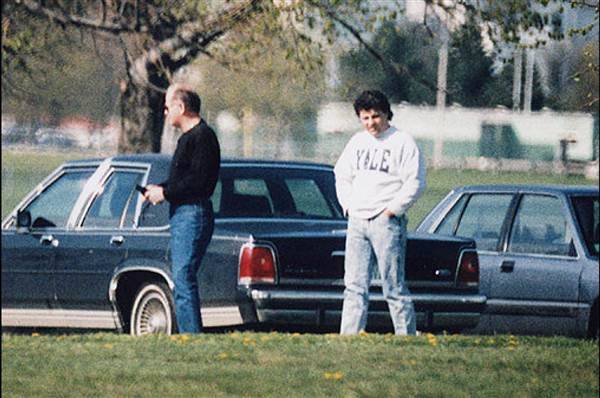
Wikimedia CommonsWhitey Bulger with his enforcer Kevin Weeks.
He then turned a blind eye when Bulger murdered Halloran in the parking lot of a waterfront bar. Years later, John Connolly would defend his actions with his results: “We got forty-two stone criminals by giving up two stone criminals. Show me a businessman who wouldn’t do that.”
His numbers, though, aren’t entirely accurate. To deflect from the criticism he was getting for working with a violent mobster, Connolly padded Bulger’s dossier by crediting information he’d gotten from other informants. But it was only a matter of time before his shady dealings would be brought to light.
Bulger Goes On The Run And Stays Hidden For 16 Years
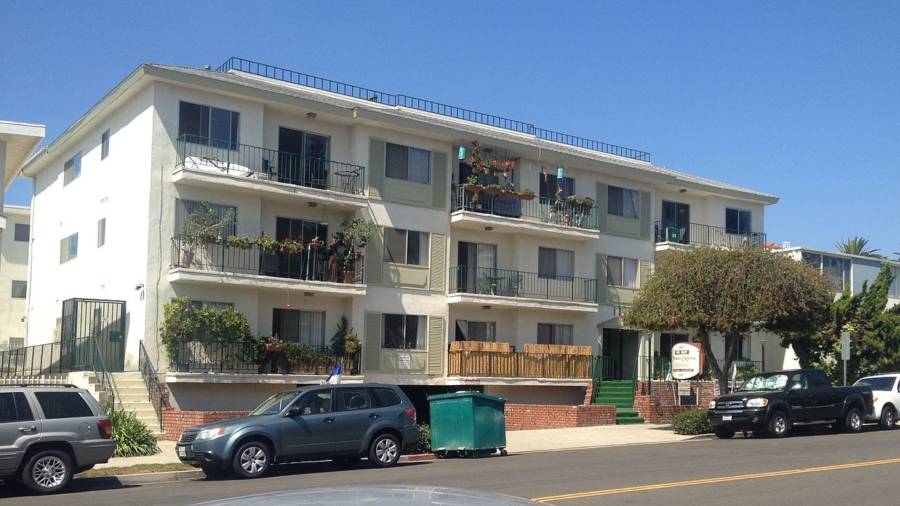
Wikimedia CommonsThe California home where Whitey Bulger hid out until June 2011.
Despite Connolly’s help, as is often the case with infamous criminals, the good times for James “Whitey” Bulger did not last forever. In 1994, the DEA was ready to charge Bulger and Flemmi. Bulger reportedly called Morris and told him, “If I’m going to jail, you’re going to jail. I’m taking you with me.”
Shortly after, Morris suffered a heart attack. Bulger was so fearsome that a simple phone call was seemingly enough to almost kill an FBI agent. But despite his ruthless persona, Bulger was not untouchable. The DEA was committed to catching him whether or not Connolly was willing to cooperate. So, John Connolly did the only thing he could at this point: He called Bulger and told him to run.
And run he did. By 1999, the only person higher on the list of “America’s Most Wanted Fugitives” than Whitey Bulger was Osama bin Laden. But even with the largest ever FBI reward for a wanted domestic fugitive — $ 2 million — James “Whitey” Bulger could not be found.

FBIWhitey Bulger was apprehended in 2011, after more than 16 years on the run.
And it’s not like Bulger was even being that careful. During his time on the run, Bulger and his girlfriend visited Alcatraz island and even took a photo of themselves in mock prison outfits.
The Capture And Trial Of James “Whitey” Bulger
It wasn’t until 2011 that law enforcement finally tracked Whitey Bulger down in Santa Monica, California. The aged criminal was living with his long-time girlfriend Catherine Greig, supported by a small fortune in cash and a collection of fake IDs.
Interestingly enough, Whitey Bulger barely cared about being caught. When the officers burst in, he simply rolled his eyes and told them, “I ain’t getting down on my f—ing knees.”
At this point, Bulger was 81 years old. He’d already spent more years living as a free man than many people live at all.
When Whitey Bulger finally appeared in court in 2013, his disgraced FBI friend John Connolly was already in jail. He’d been convicted of corruption in 2002, with a murder charge piled on top in 2008. His supervisor John Morris, on the other hand, escaped prison by testifying against Connolly.
Furthermore, Bulger’s former associates played an important role in his trial. One of these was 72-year-old former Bulger hitman John Martorano, who testified as the star witness.
Interestingly enough, it wasn’t Martorano’s detailed recollection of 20 murders that made the man known as the Executioner show a bit of emotion. Instead, it was finding out that Whitey Bulger had been an FBI informer. “It broke my heart,” Martorano said.
Bulger Is Doomed By A Former Associate
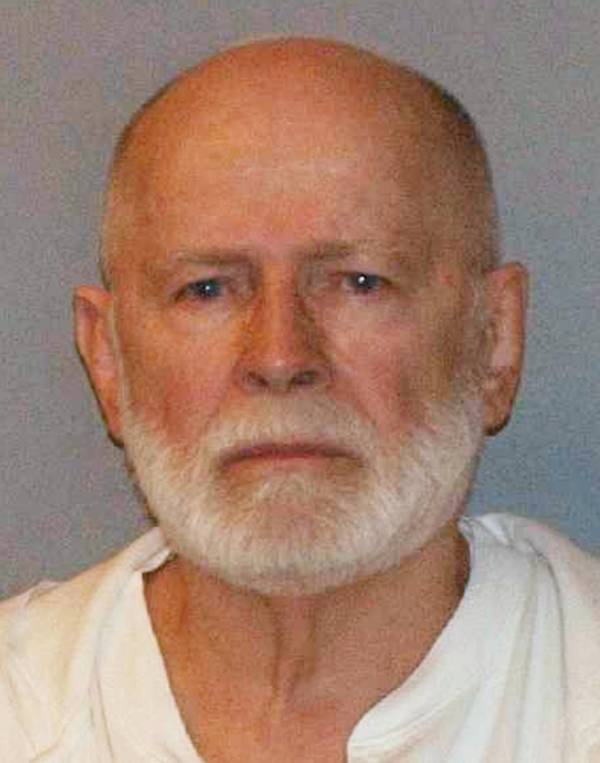
Wikimedia CommonsThe 2011 mugshot of James “Whitey” Bulger.
Meanwhile, what really hurt Whitey Bulger was the testimony of his protege Kevin Weeks, which was key to him being convicted on 31 charges, including 11 separate murders, and being given two back-to-back life sentences.
The judge didn’t mince words. During sentencing, she told him: “The scope, the callousness, the depravity of your crimes are almost unfathomable.”
Even at a crisp 83 years old, Bulger could not hide his anger about Weeks’ betrayal. While Weeks was giving his testimony in court, Whitey Bulger shouted: “You suck!” Weeks snapped back with: “F— you, ok?” In response, Bulger yelled back: “F— you too.”
This courtroom exchange was made even more bizarre by Weeks’ claims that neither he nor Bulger liked to curse. As Weeks said in criticism of his and Bulger’s portrayal in the 2015 film Black Mass, “We never really cursed like that.”
Kevin Weeks and James “Whitey” Bulger might have been killers, he says, but they didn’t have potty mouths. “In all the years I was with that man, he never swore at me once.”
One thing he does agree with the film on, though, is the violence. “We really did kill those people,” Weeks said, “but the movie is fantasy.”
The Brief Imprisonment And Brutal Murder Of Whitey Bulger
Like Weeks, James “Whitey” Bulger ultimately admitted to most of his crimes. One thing he never admitted to, however, is being an FBI informant. “Never,” Bulger insisted. “Never.”
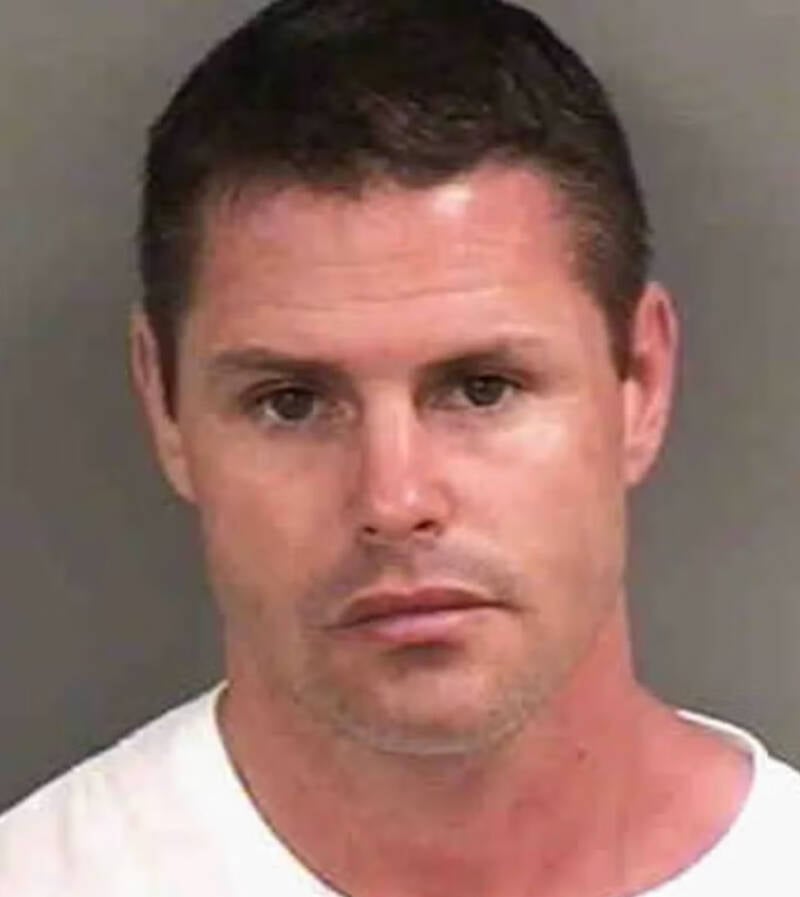
Public DomainFotios Geas, the man primarily responsible for the murder of Whitey Bulger on October 30, 2018.
But he still did have some major regrets, as demonstrated by a prison letter Bulger wrote in 2015. In response to school girls mailing him questions for a leadership competition, Bulger seemed to show remorse for his life. “My life was wasted and spent foolishly, brought shame and suffering on my parents and siblings and will end soon,” he wrote.
That life did come to an end in October 2018. Wheelchair-bound, at the age of 89, the former crime lord was transferred to a high-security prison named Hazelton in West Virginia. A mere 12 hours later, Whitey Bulger was beaten to death by two inmates with a padlock stuffed in a sock.
To retired federal prison special investigative agent Vito Maraviglia, this outcome was not at all surprising. “Either they were extremely negligent or just a complete idiot and there had to be 10 idiots because a lot of people signed off on that,” he commented.
Indeed, what other outcome could be expected when transferring a man believed to be an FBI informant from a “safe haven” prison to one of the most violent penitentiaries in the United States?
Although it’s not clear what motivated Whitey Bulger’s murder, the most likely suspect is a former mafia enforcer named Freddy Geas with a strong distaste for informants. For a man who dispensed violence his whole life, it was a tragically fitting way to go out.
After reading about Whitey Bulger, discover the stories of fearsome Irish mobsters Mickey Featherstone and Frank Sheeran.





